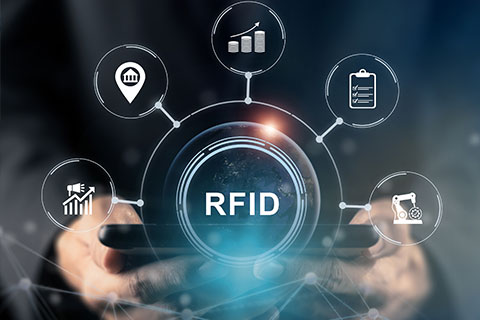The scientific approach to RFID

Every business can become more efficient, it’s just a matter of finding out how. With over 20 years of experience in RFID research and development, Murata ID Solutions is well equipped to identify the area where RFID could be most beneficially applied and draw up a roadmap to get you there.
Ahead of any major RFID venture, our experts draw up a blueprint that sets out the parameters, key action points and expected outcomes of the project. Any RFID deployment, in particular when facing complex projects, should be preceded by a feasibility study.
How to start with RFID
When proposing RFID, some vendors start from their technology. We do not. We start from an analysis of our customer’s needs, the opportunities they wish to gain, the issues they want to address.
Learn moreFeasibility Study

Much like the design of a house, the feasibility study is the design of the RFID system in its entirety. It defines the perimeters of the supply chain, identifying products, establishing processes, parametrizing the features of the hardware and software interfaces, and estimating the return on investment (ROI) for business.
The feasibility study can be divided into a series of stages that are sequential in nature. Once the objectives have been defined and the tag type and coding that will be adopted is decided, the core parts of the feasibility study can be carried out, consisting of the “AS IS” analysis, the “TO BE” design, and the calculation of the return on investment.
The three main stages of
feasibility study:
-

- 'AS-IS' Analysis:
-
An in-depth examination of current supply-chain processes, from the first upstream process, through to shipment and distribution, right up to the point of sale.
In our investigations, we dig deep into the processes used at each stage of the supply chain, highlighting opportunities and potential use-cases for RFID.
-

- 'TO-BE' planning
-
A roadmap to implementation, our 'to-be' planning outlines the ways in which RFID technology and systems can be employed in practice.
Analysts look at the technical, informational and management specifications of the specific project, setting out the full range of hardware, software, processes and integrations with legacy systems that will need to be put in place.
With the to-be analysis we deliver the project of the RFID system, which is the basis for any further development.
-

- ROI calculator
-
A full calculation of the costs and projected cash flows associated with the project, including terminating, initiating, and operating costs and key investment affordability factors may be required.
Our mathematical models are highly adaptable, allowing for full flexibility and potential changes in the project parameters. We also outline qualitative, strategic outcomes that are difficult to measure monetarily.
RFID Use Cases
RFID has an ever-growing list of use-cases, many of which have revolutionised industry processes from shop-floor management to production and post-sale customer care.
Learn moreFeasibility study outcome

The feasibility study will determine the major investment affordability parameters, such as ROI, NPV (Net Present Value), IRR (Internal Rate of Return) and PBP (payback period). Alongside the purely economic analysis, qualitative factors such as opportunities and/or strategic considerations that are difficult to translate into monetary terms will be analysed and evidenced.
The results of the design phase are available in a parametric calculation model that allows for the automatic recalculation of the indicators as a function of the input parameter variations.
The results of a feasibility study:
-

- Project Document
-
A project document outlining the design of the technological solution that, starting from the current processes, can pursue the use-case goals that were outlined at the outset.
The project design addresses various aspects such as hardware (e.g. process-related devices such as tags), software (e.g. integration with resident systems, such as interfaces and architecture) and management (the new way of doing things) in an integrated manner.
-

- Calculation model
-
An evolved and parametric calculation model that, starting from the main investment items, initiating, and operating costs, quantifies the cash flows associated with the investment itself and the major investment affordability indicators.
The model is parametric, in the sense that it allows for the automatic recalculation of the indicators according to the variation of the input parameters.
-

- Implementation roadmap
-
An implementation roadmap that starting from the current situation, defines how and when the 'To-be' project result scenario may bey achieved.
Considering that the structures involved (logistic facilities, retail stores, hospitals etc.) can be numerous, it is important to conduct a roadmap study to highlight how the rollout of the project may be implemented.
RFID Project Piloting

It is often necessary to go through a piloting of the project on a smaller scale, on the one hand to field-test the practical feasibility of the proposed solution, and on the other, to experimentally verify the obtainable benefits.
The roadmap must also address issues related to the pilot - issues such as which stores to target, on which classes, tag application modes, pilot processes vs. the roll out process, and so on.
The pilot often represents a project within a project in the sense that the processes may also differ significantly from those of the final draft, and these aspects need to be addressed at this stage.